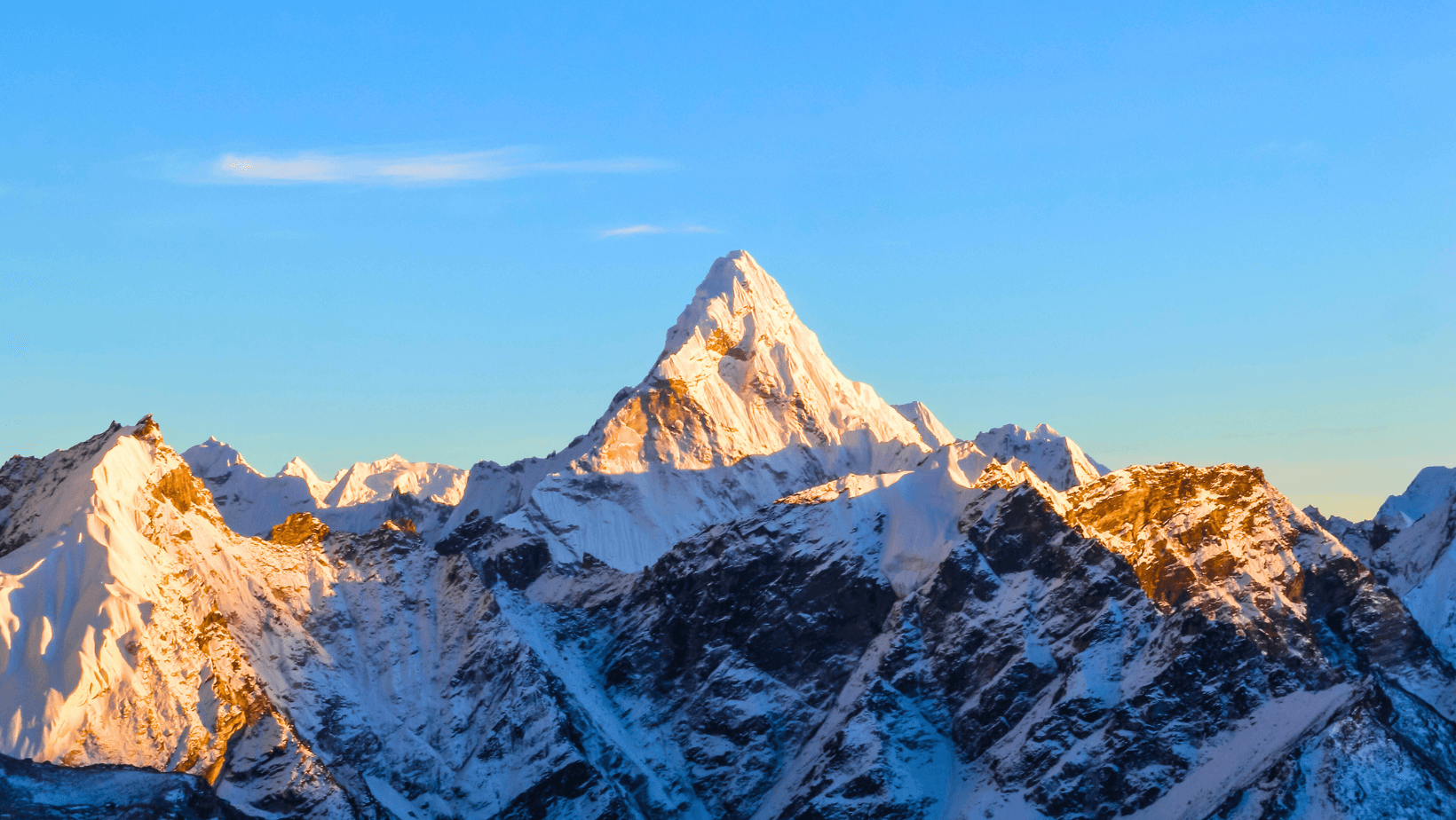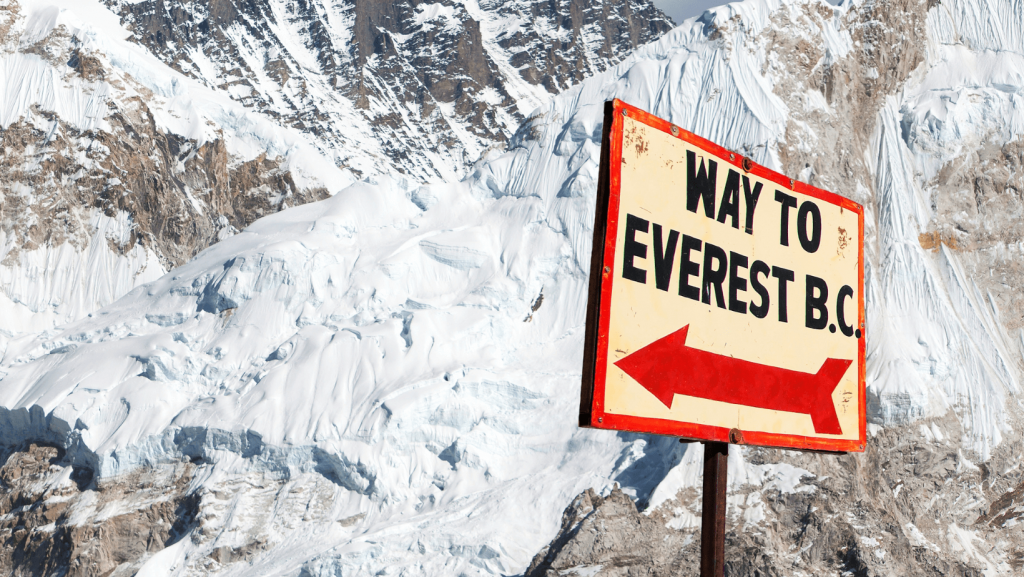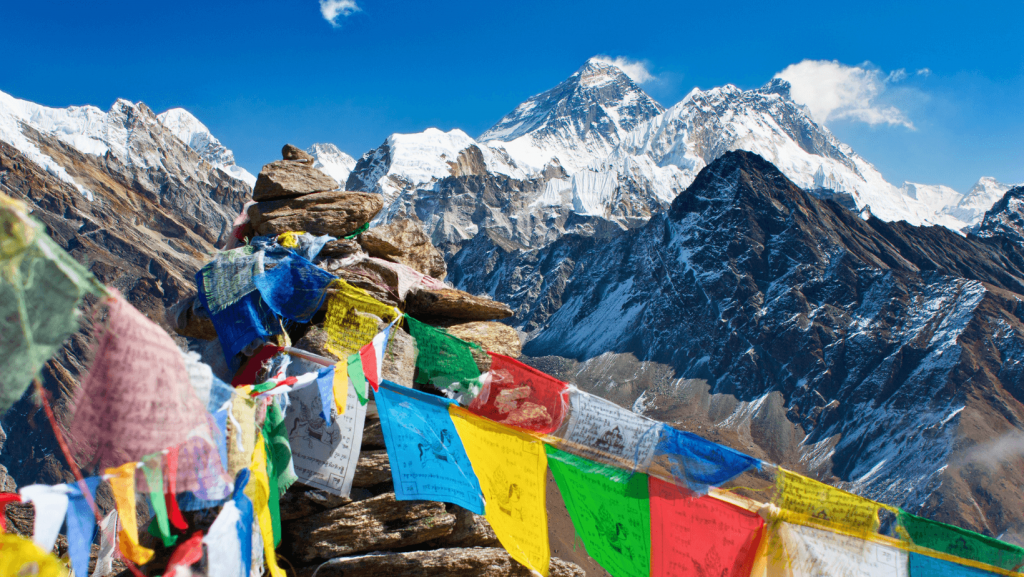
Mount Everest Basics
With an elevation of 29,032 feet (8,849 meters), Mount Everest is the highest point on Earth. The mountain is located in the Himalayan range between Nepal and Tibet, an autonomous region of China. It was officially recognized as the Earth’s highest point in 1852 when the governmental Survey of India established that fact.
In 1865, the mountain was renamed from Peak XV to Mount Everest, after George Everest, a former Surveyor General of India. However, the local populations also know the mountain by several other names. Its Tibetan name is Chomolungma, meaning “Mother Goddess of the World,” or, “Goddess of the Valley.” The Nepali name for the mountain is Sagarmatha, which translates to “Peak of Heaven.”
Everest and its surrounding peaks are part of a large mountain massif that forms a focal point of tectonic action in the Great Himalayas. The Himalayans were formed by tectonic action between the Indian-Australian Plate and the Eurasian Plate. These two plates collided between about 40 and 50 million years ago, resulting in the creation of the mountain range, including Mount Everest.

Climbing Mount Everest
The first recorded people to reach the summit of Mount Everest were New Zealand mountaineer Edmund Hillary and his Tibetan guide Tenzing Norgay. They reached the summit on May 29th, 1953. Hillary left a crucifix on the mountain peak, and Tenzing, a Buddhist, made a food offering. They spent roughly 15 minutes atop the mountain before beginning their descent.
In recent decades, climbing Mount Everest has become a popular expedition for mountaineers. Expeditions are typically aided by local Sherpa guides. While “Sherpa” is often used to mean mountain guide, the term actually refers to an indigenous group from the area. Since Sherpas live at a high altitude, they are accustomed to low oxygen levels, a common issue for those attempting to reach the peak.
Despite the aid of Sherpas and advancements in technology, climbing Mount Everest is still dangerous. Poor weather conditions limit the climbing season, and even during peak season, snow, ice, and wind can create deadly hazards like avalanches. But perhaps the greatest danger is the altitude. The area above 8,000 meters (26,000 feet) is referred to as the “death zone.” Oxygen levels at this point are so low that even those with supplemental oxygen will experience oxygen deprivation (hypoxia), leading to brain swelling and eventually death, if they remain above 8,000 meters for too long.

Controversies and Concerns
As its popularity has increased, Mount Everest’s climbing industry has also become increasingly controversial. With more and more people attempting to reach the summit, “traffic jams” have become common on several parts of the mountain. This often results in climbers spending additional time in the death zone as they wait for their chance to reach the peak.
The extra traffic on the mountain has also led to a large increase in pollution as climbers discard unwanted items like empty oxygen tanks and climbing gear along the way. There are also an estimated 200 bodies on Mount Everest. Given the dangerous conditions – especially near the summit – it’s often impossible to remove the bodies of climbers who die during the expedition.
Historically the Sherpa people have often been exploited by climbers as they subject themselves to extreme danger in exchange for low pay. While most climbers only have to traverse hazardous areas of the mountain once, Sherpas regularly pass through dangerous sections of the mountain 15 to 20 times in a single climb to set equipment and carry gear for other climbers.
Weekly Trivia
Enter your guess to reveal the answer.

